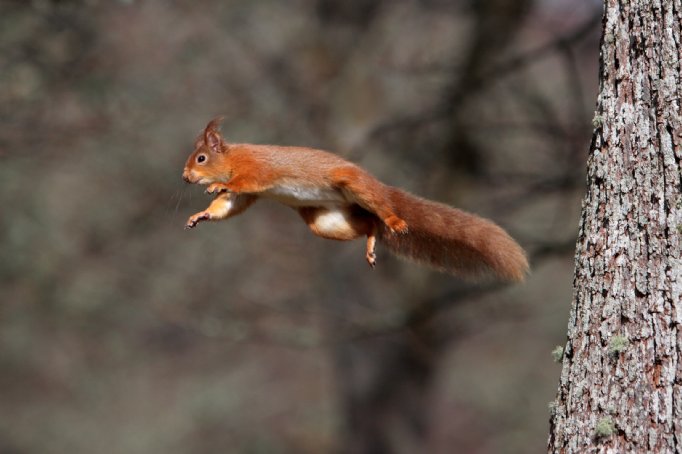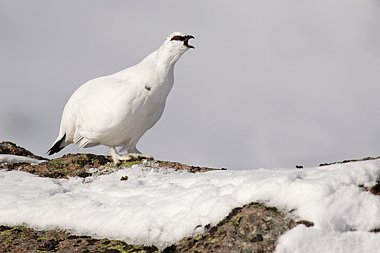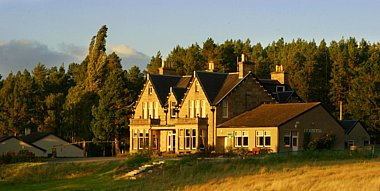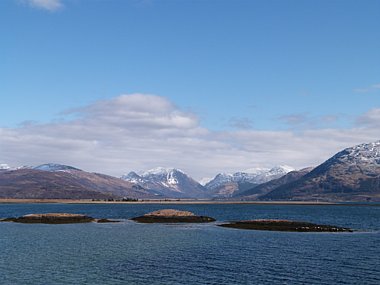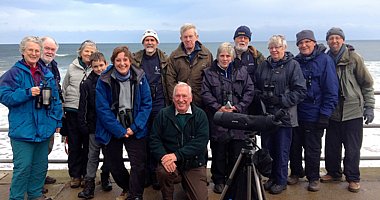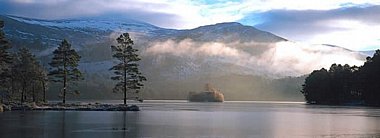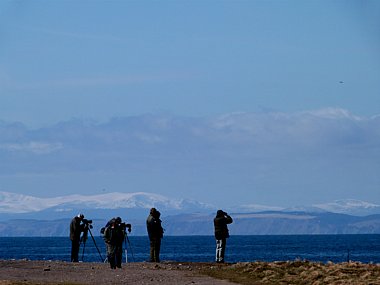The fabulous birdlife of Scotland just can't be beaten, and here at Heatherlea we have a huge choice of tours and many years' experience, we are familiar with them all! Here are a few notes about the key species;
Capercaillie, Black Grouse, Scottish Crossbill, Crested Tit, Golden and White-tailed Eagle, Dotterel, Ptarmigan, Divers and Slavonian Grebe, Seabirds (incl Puffin), Corncrake, Hen Harrier and Merlin.
Otter, Dolphins, Whales and Basking Shark, Red Squirrel
SOME KEY SPECIES
Capercaillie are declining rapidly in Scotland, so Heatherlea now regard sightings as 'incidental', meaning we do not actively target the birds during our Scottish tours.
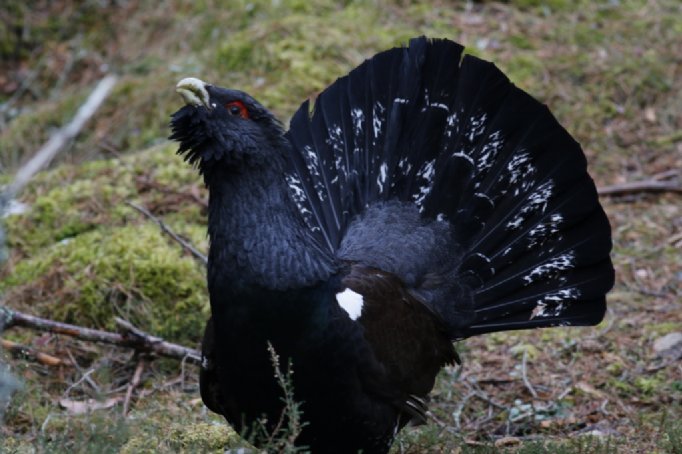
Guidelines for watching Capercaillie have been issued by the Scottish Capercaillie Group, a national body whose members include RSPB Scotland, Scottish Natural Heritage, Forestry and Land Scotland, Scottish Forestry, Cairngorms National Park Authority, Game and Wildlife Conservation Trust and Scottish Land and Estates. Heatherlea fully supports these guidelines. To read a copy of current advice, please click here.
We were pleased to receive this unsolicited message from RSPB;
'Dear Heatherlea, I am writing to you as Capercaillie Advisory Officer and on behalf of my funders, the Cairngorms Capercaillie Project, Forestry and Land Scotland, NatureScot, RSPB and Scottish Forestry, to thank you for following the Guidance for Responsible Capercaillie Watching, set out by the Scottish Capercaillie Group.
We appreciate that you have clearly set out this guidance on your website so thank you for your efforts in protecting this vulnerable species and following the guidance to minimise the risk of disturbing Capercaillie as far as possible.
If you require any further advice or support, please do not hesitate to get in touch. Many thanks ... ' (name) Capercaillie Advisory Officer
Black Grouse
Our local population is strong, and you can reasonably expect to see Blackcock throughout the winter until the end of May, then again from mid-September. Depending on the weather and breeding season it is possible to see them in the summer months but not with reliability, and we advise birders who are keen to see them do so in the winter, spring or autumn. Sometimes we visit lekking areas en-route to Mull, but usually we see these wonderful birds close to our home before breakfast. We are careful not to disturb these sensitive birds at the lek and view through telescopes, offering undisturbed views of Black Grouse acting naturally.
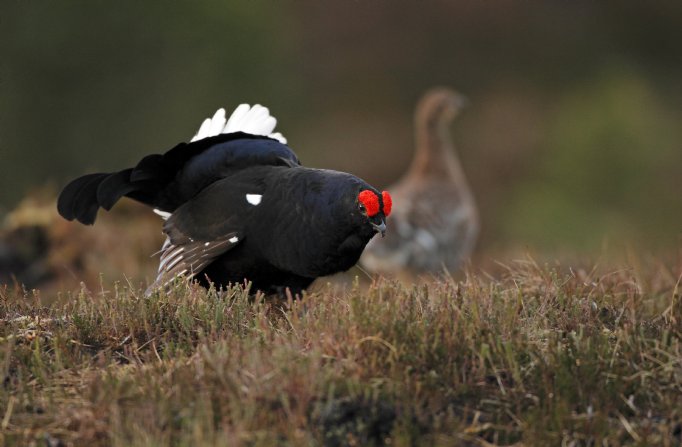
Scottish Crossbill
Heatherlea see crossbills virtually every week throughout the year, and since the birds tend to stay for some time in a favoured area, we can often take you straight to them. Some years see an influx, though you will benefit from up-to-date local knowledge, and in times when crossbills are scarce your chances of seeing them are considerably greater by choosing Heatherlea.
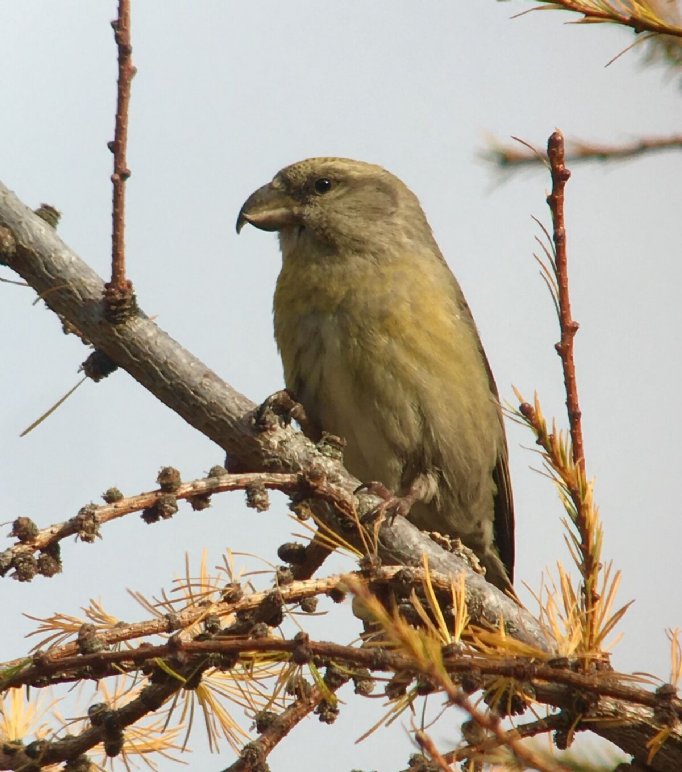
Scottish, Common or Parrot? The debate continues, but scientifically speaking all three species are currently recognised and considered to breed within the Highlands. Crossbills are nomadic by nature and we see birds with bills of varying sizes feeding on different sized cones. It is a complex subject, and identifying them is extremely difficult with overlapping features and a great deal of individual variation with all three species. Sonogram analysis of certain calls are the only way to achieve positive identification, something which can not reliably be achieved in the field. Therefore, please be aware that Heatherlea guides can not specifically identity any crossbills with certainty, but may offer their 'best opinion'.
Crested Tit
A fairly common resident, seen on our feeders in winter and nearby all year. In May, Crested Tit can be elusive, as only one bird is feeding whilst the other stays hidden in the nest, but we usually see 'Cresties' fairly readily at any time. A lovely bird and a real favourite at Heatherlea.
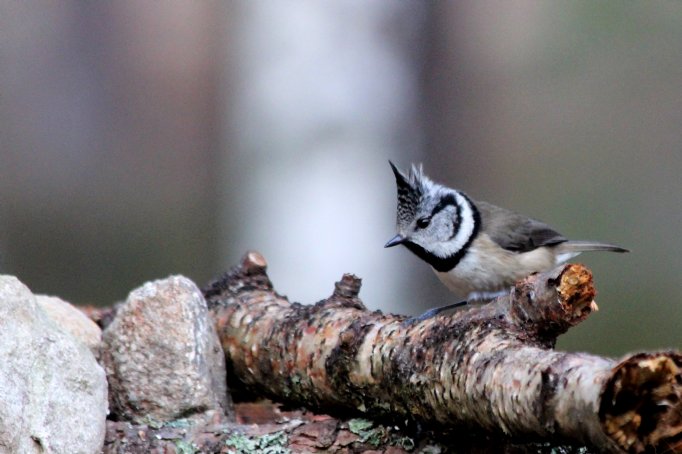
Golden and White-tailed Eagle
Eagles are key targets every week of the year, with Golden Eagle seen nearby throughout the year and White-tailed Eagles increasingly common. All our trips to the West Coast give options to see both eagle species. We always view eagles from public roads and never approach the birds within breeding territories. By late July young birds are airborne, and late summer and autumn are particularly good, with winter being superb for birds displaying and maintaining their territories.
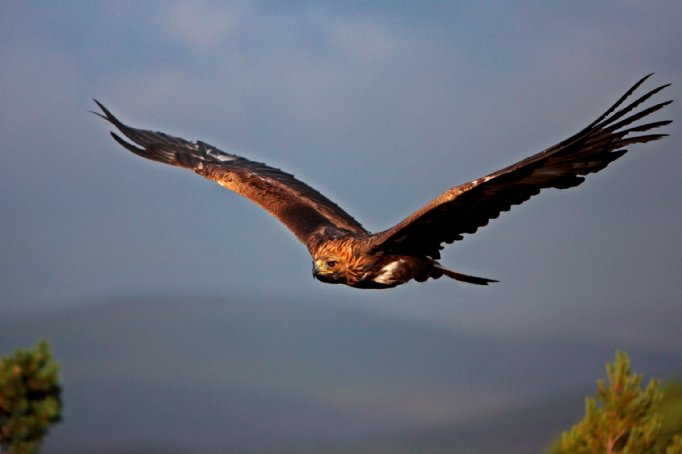
Dotterel
Dotterel are present on their breeding grounds in the Cairngorms from early May till mid-August, with the best chance of seeing colourful females in May, and males with chicks in July. One advantage of our fabulous location in the centre of the Cairngorms National Park is that we are close to all the key habitats for special birds, and we pick the best day for our mountain adventure. Weather plays a big part in our search for these birds, and we try to pick the best available day. We generally require an optional walk on a good trail, going at a slow pace.
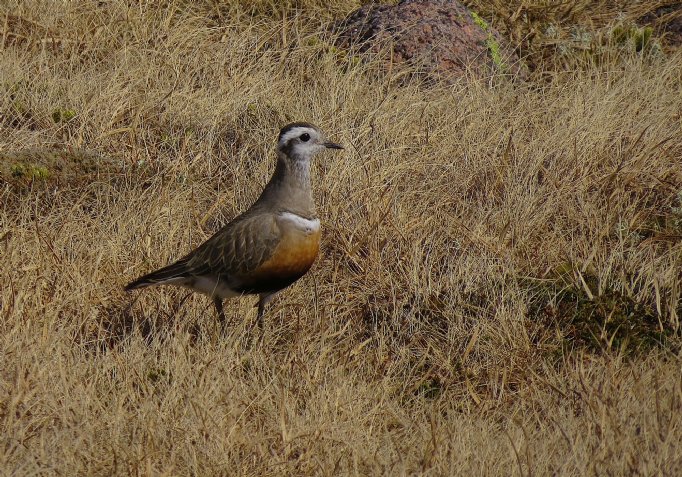
Ptarmigan
A resident species that moves around the mountains according to weather and time of year. In all seasons it is possible to see them, though the best and most consistent views are gained by walking up the hill, often for 1- 3 miles return on a good path. Some weeks Ptarmigan are visible from the road, while some weeks (particularly mid-summer), we may have to search on the high tops, requiring a longer walk. Our experienced guides are in the hills most weeks of the year and know the best places to look, so we have a very high success rate with this enigmatic species. We also sometimes see Ptarmigan at the west coast, where we can view them with less walking.
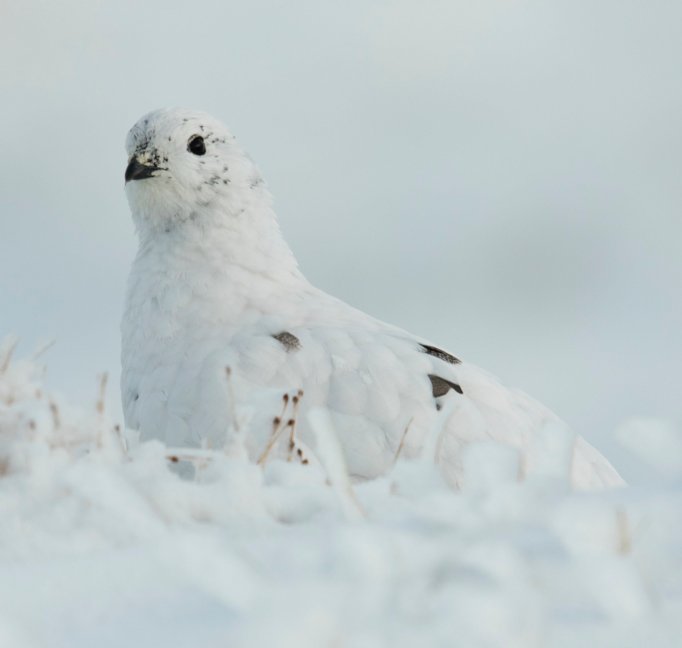
Divers and Slavonian Grebe
These beautiful birds are rare inland, and we are careful not to disturb them. All are seen in breeding plumage from late March till mid-July. Black and Red-throated Diver and Slavonian Grebe are seen most weeks, and all are rare species. Great Northern Diver are excellent in early spring, especially on trips that visit the West Coast. All four species can be seen on the open sea in winter months. White-billed Diver are rare, but we enjoy occasional sightings in spring.
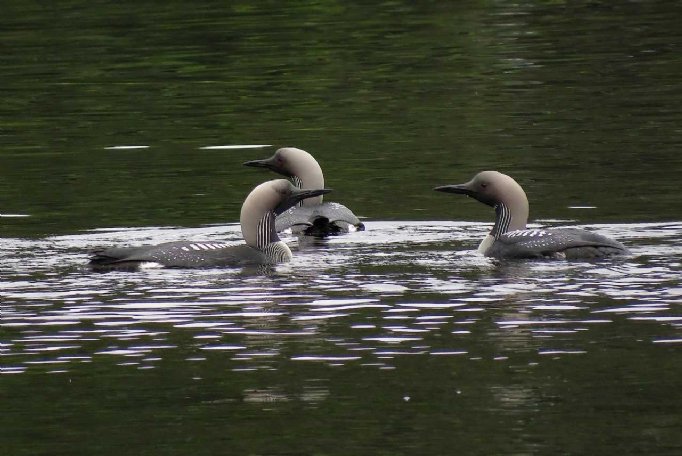
Seabirds (including Puffin!)
The seabird spectacle of northern and western Scotland is one of the great ornithological experiences in Europe. From mid-May to late-July seabird colonies are buzzing with birds, and our trips to Handa, Troup Head, the Bass Rock, Isle of May, Orkney, Shetland and the north coast of Sutherland and Caithness are all timed to see the colonies at their best. There can be tens of thousands of birds of over a dozen species including Guillemot, Razorbill, Puffin, Black Guillemot, Fulmar, Shag and breeding Great and Arctic Skua. Our most intimate Puffin encounters are on the Treshnish Isles on our Mull and Inner Hebrides holidays and in Shetland.
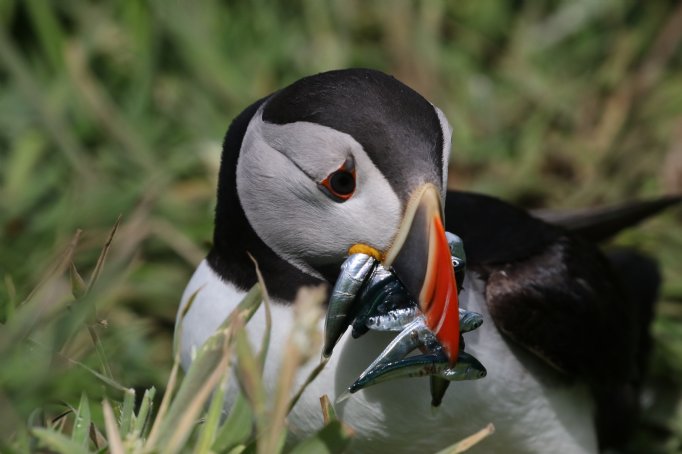
Corncrake
The elusive Corncrake has consistently proved to be one of the highlights of our trips to the Inner and Outer Hebrides in late spring and early summer. Every guest on our 'Outer Hebrides in Spring' holidays has seen Corncrake! You can now also choose our 'Highlands and Corncrake' option in May, which includes a couple of nights on the Outer Hebriudes in peak season for the birds.
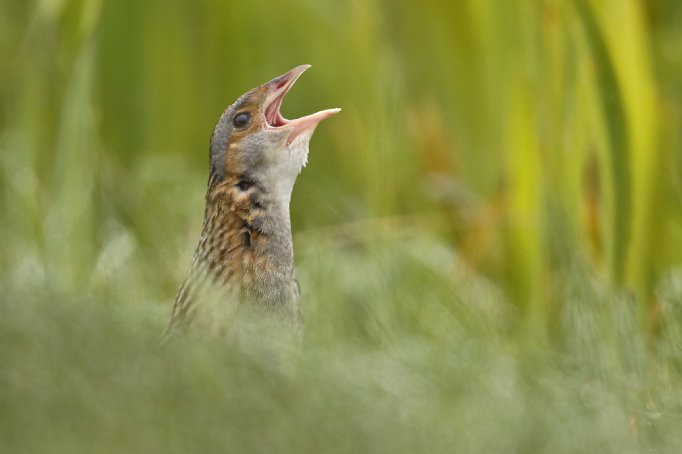
Hen Harrier and Merlin
The highest densities of these raptors is on Orkney and the Inner and Outer Hebrides and all our trips to these places offer a good chance of seeing both. There are small numbers resident in the Highlands, and it is possible to see them every week of the year right across the Highlands and Islands.
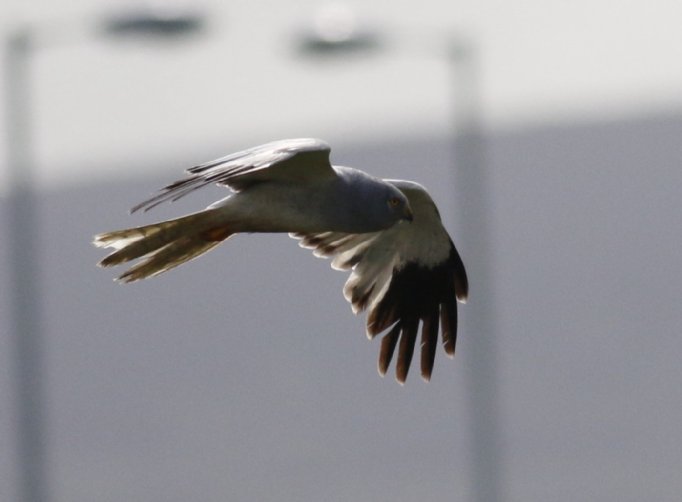
KEY MAMMALS
Otter
Local knowledge goes a long way for these hard to find mustelids! Otters are possible on all holidays throughout the year, with itineraries that stay on the West Coast, Inner and Outer Hebrides and Shetland offering the best opportunities.
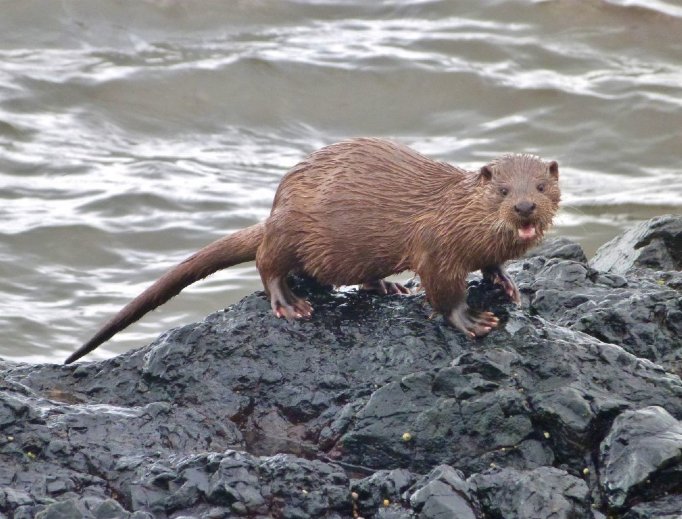
Dolphins
Dolphins can be seen throughout the year on both the East and West Coast. The peak for sightings however is in summer and early autumn. Most weeks we find our resident Moray Firth Bottle-nosed Dolphins, while on the West Coast it is usually the short-beaked Common Dolphin that we come across. Each year we record Risso’s, White-sided and White-beaked Dolphins, but these encounters are a bonus and are not a weekly occurrence. Many of our longer ferry crossings produce at least one species of Dolphin.
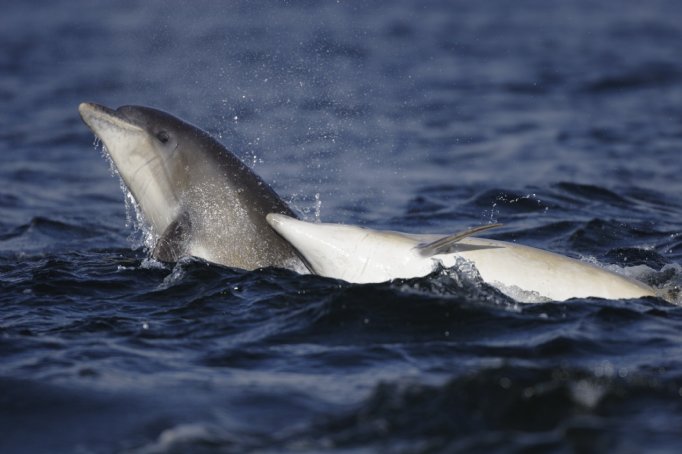
Whales and Basking Shark
Over the years we have seen Sperm, Pilot, Humpback, Sei and Killer Whales in Scottish waters, though it is always a red letter day when we connect with one of these rarities. More common are the Minke Whale sightings we enjoy between May – September on both the East and West Coast. Basking Shark numbers vary year on year, but in the right conditions on the West Coast in Summer and Autumn they can be plentiful.
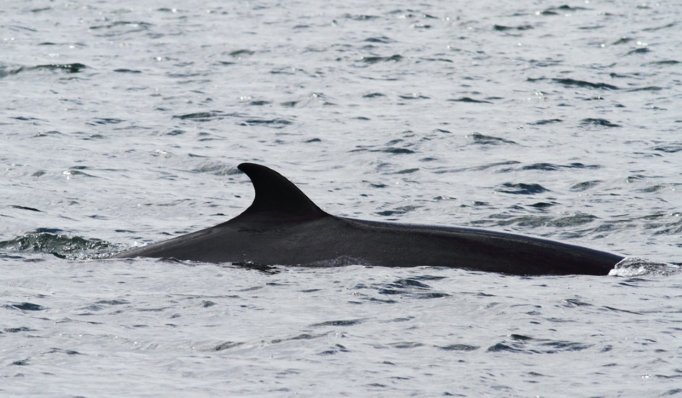
Red Squirrel
Red Squirrels are resident and locally common across the Highlands. We have several obliging individuals that visit our bird feeders here at the Mountview Hotel several times a day and almost all groups have superb sightings throughout whatever the season. You might see Red Squirrels on our feeders whilst enjoying your own breakfast.
